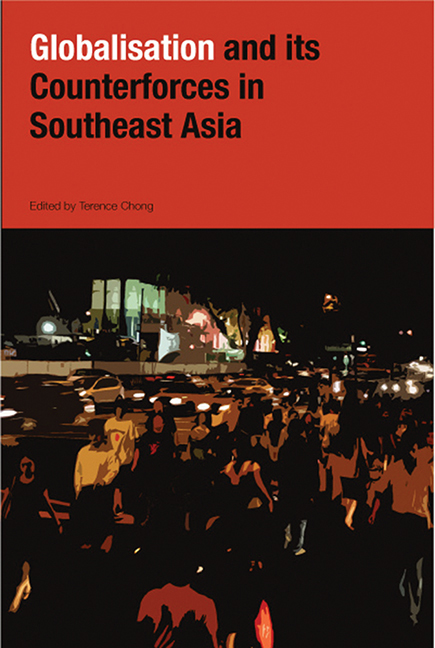Book contents
- Frontmatter
- Contents
- Foreword
- Preface
- The Contributors
- Introduction
- Part I The Political Contradictions of Globalization
- Part II Economic Regionalism and Global Influences
- Part III Local Security, Global Insecurity
- Part IV Social Processes: Arrested Development
- Part V Cultural Production in the Global Matrix
- 15 Measuring Cultural Globalization in Southeast Asia
- 16 The Singaporean Creative Suburb of Perth: Rethinking Cultural Globalization
- 17 Thai Magical Realism and Globalization
- Index
17 - Thai Magical Realism and Globalization
from Part V - Cultural Production in the Global Matrix
Published online by Cambridge University Press: 21 October 2015
- Frontmatter
- Contents
- Foreword
- Preface
- The Contributors
- Introduction
- Part I The Political Contradictions of Globalization
- Part II Economic Regionalism and Global Influences
- Part III Local Security, Global Insecurity
- Part IV Social Processes: Arrested Development
- Part V Cultural Production in the Global Matrix
- 15 Measuring Cultural Globalization in Southeast Asia
- 16 The Singaporean Creative Suburb of Perth: Rethinking Cultural Globalization
- 17 Thai Magical Realism and Globalization
- Index
Summary
INTRODUCTION: ORIGINS OF MAGICAL REALISM
Magical realism is a comparatively new genre, if we bear in mind that its first use was in the beginning of the last century. Its hybrid nature, as its name suggests, depends on a combination of two seemingly different traditions, the realistic and the magical. This explains why the genre had a late start, as its existence relies upon the established tradition of realism, a literary movement that was popularized in the nineteenth century. The rise of realism was in conjunction with that of science, in its modernizing, optimistic belief in the efficiency of reason. As a manifestation of the Enlightenment project, literary realism, especially that propounded by such towering figures as Gustave Flaubert and Stendhal, tends to emphasize the capacity of the writer to gauge human experience, especially that of the bourgeois, and to narrate their story in a strictly causal manner. For realism, to be “realistic” means to be able to explain by reason and causality through an objective spyglass. It goes without saying that magical or superstitious elements are downplayed, as they are incongruous with such a rationalistic paradigm. According to Damian Grant,
It is in the spirit of this realism that literature seeks to deliver itself up to the real world, to open its gates submissively to the horses of instruction; to ballast its giddy imagination with the weight of truth, and submit its forms, conventions, and consecrated attitudes to the purifying ravishment of fact.
With firm roots in everyday reality, rather than in romantic, imaginary landscapes, literary realism became one of the major literary movements both in Europe and North America, signalling with pride that literature could stand alongside science in its capability to probe the complexities of human life and rationalize it in a narrative that comprises a series of causal events.
- Type
- Chapter
- Information
- Globalization and its Counter-Forces in Southeast Asia , pp. 380 - 396Publisher: ISEAS–Yusof Ishak InstitutePrint publication year: 2008



